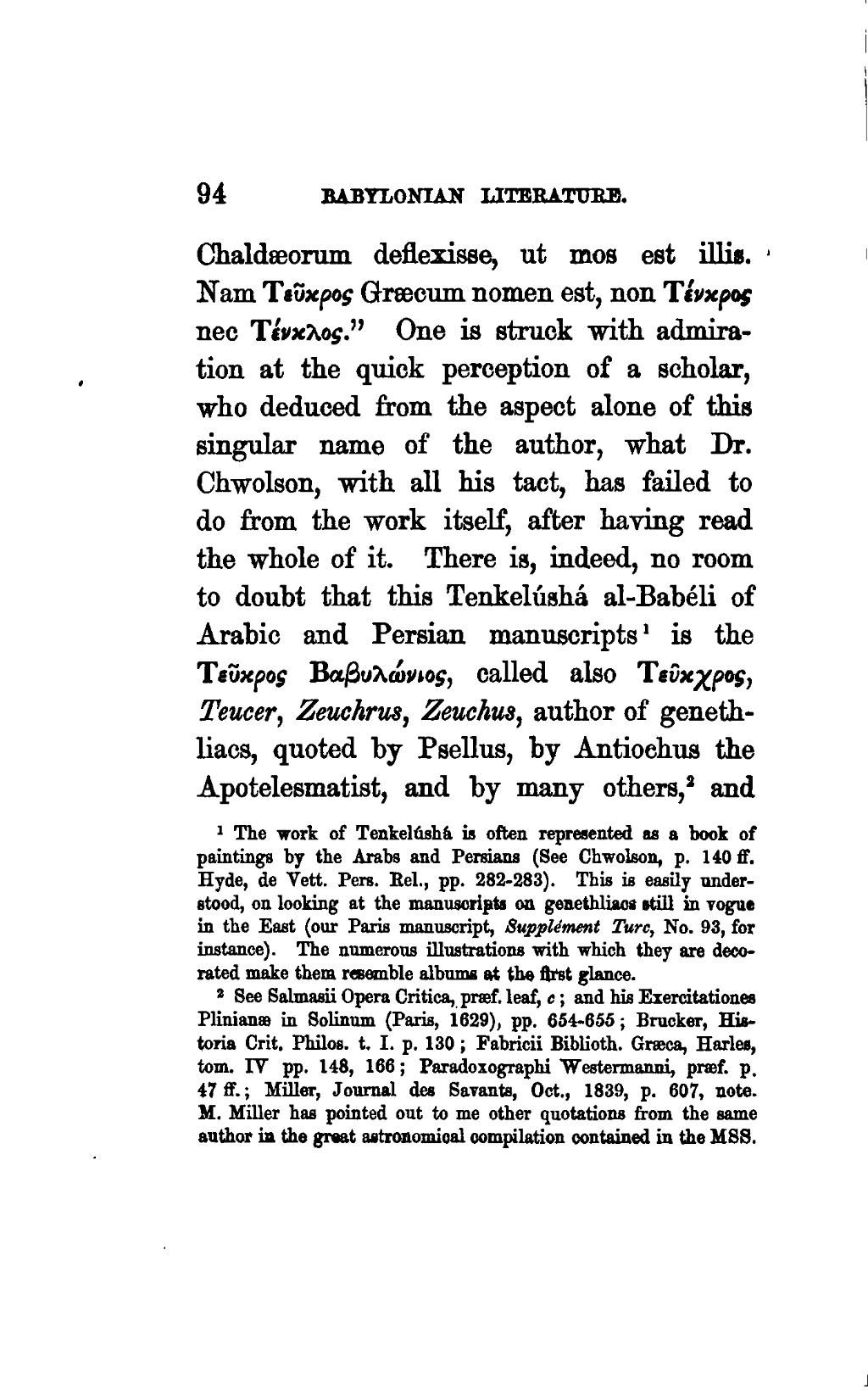This page has been validated.
94
BABYLONIAN LITERATURE.
Chaldæorum deflexisse, ut mos est illis. Nam Τεῦκρος Græcum nomen est, non Τένκρος nec Τένκλος.” One is struck with admiration at the quick perception of a scholar, who deduced from the aspect alone of this singular name of the author, what Dr. Chwolson, with all his tact, has failed to do from the work itself, after having read the whole of it. There is, indeed, no room to doubt that this Tenkelúshá al-Babéli of Arabic and Persian manuscripts[1] is the Τεῦκρος Βαβυλώνιος, called also Τεῦκχρος, Teucer, Zeuchrus, Zeuchus, author of genethliacs, quoted by Psellus, by Antiochus the Apotelesmatist, and by many others,[2] and
- ↑ The work of Tenkelúshá is often represented as a book of paintings by the Arabs and Persians (See Chwolson, p. 140 ff. Hyde, de Vett. Pers. Bel., pp. 282-283). This is easily understood, on looking at the manuscripts on genethliacs still in rogue in the East (our Paris manuscript, Supplément Turc, No. 93, for instance). The numerous illustrations with which they are decorated make them resemble albums at the first glance.
- ↑ See Salmasii Opera Critica, præf. leaf, c; and his Exercitationes Plinianæ in Solinum (Paris, 1629), pp. 654-655; Brucker, Historia Crit. Philos. t. I. p. 130; Fabricii Biblioth. Græca, Harles, tom. IV pp. 148, 166; Paradoxographi Westermanni, præf. p. 47 ff.; Miller, Journal des Savants, Oct., 1839, p. 607, note. M. Miller has pointed out to me other quotations from the same author in the great astronomical compilation contained in the MSS.
